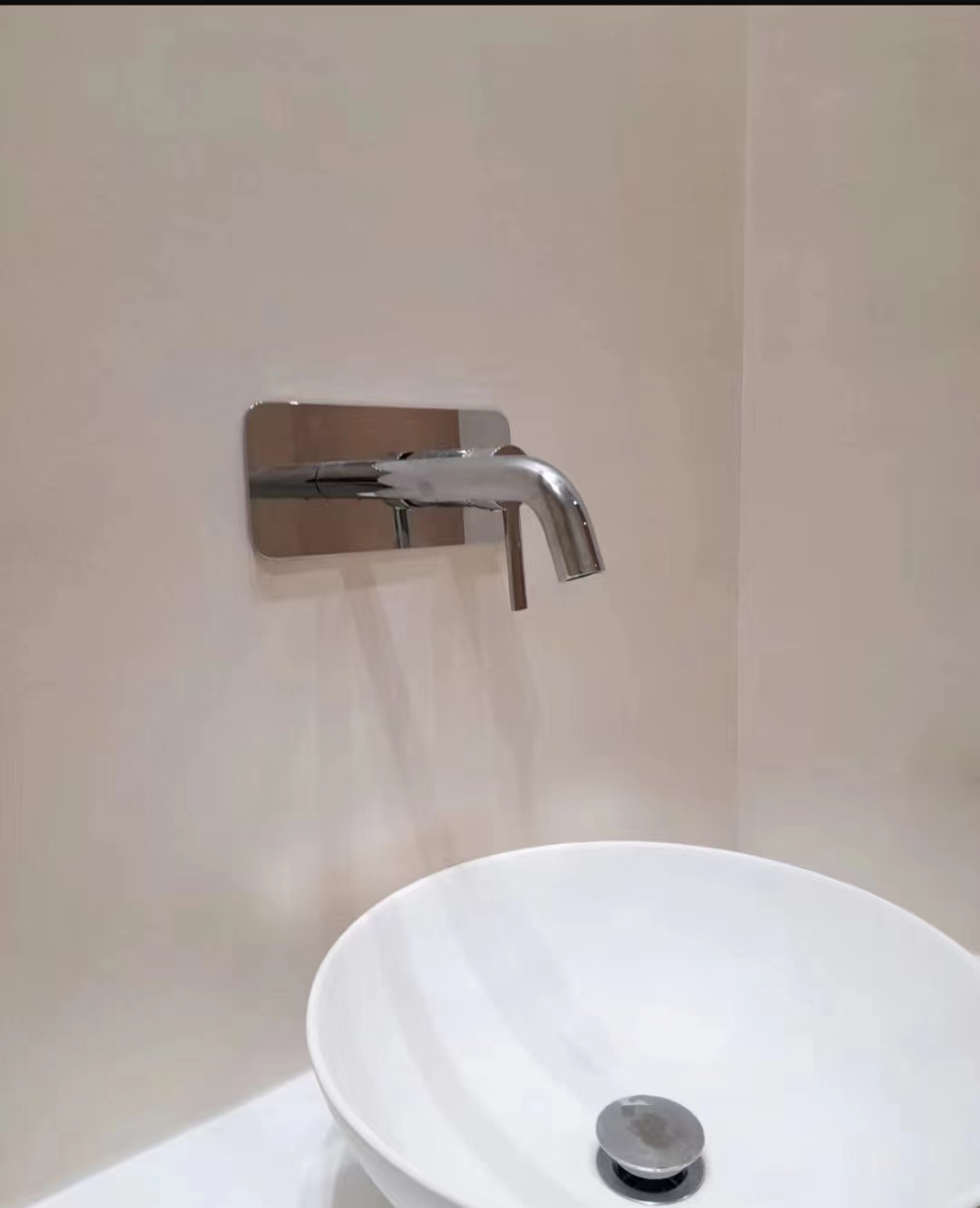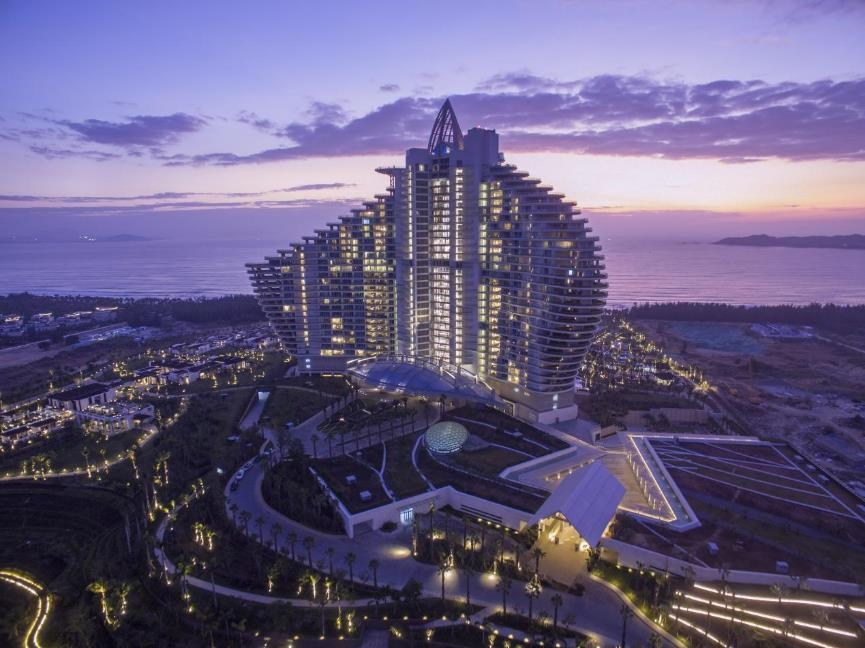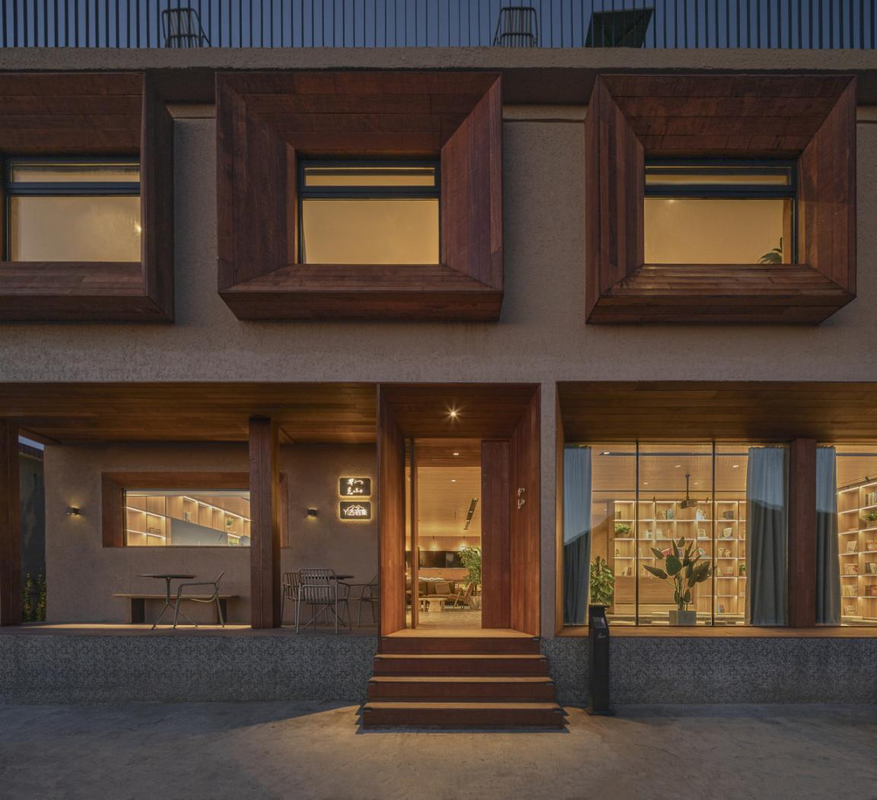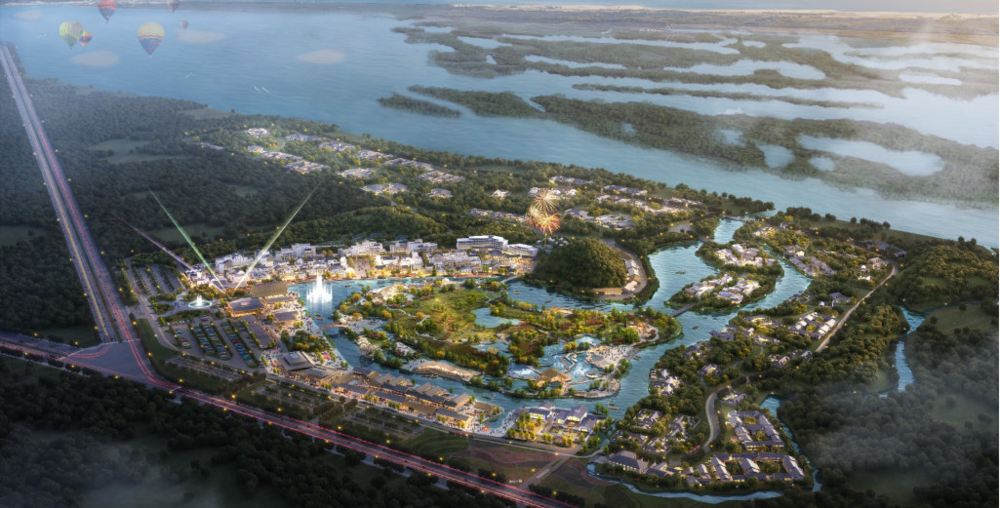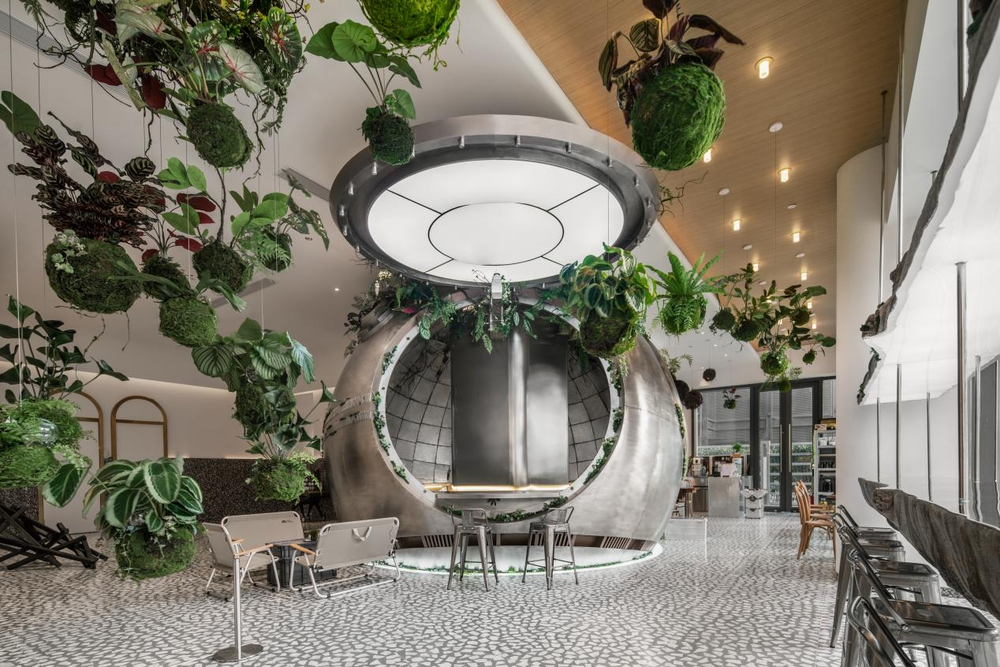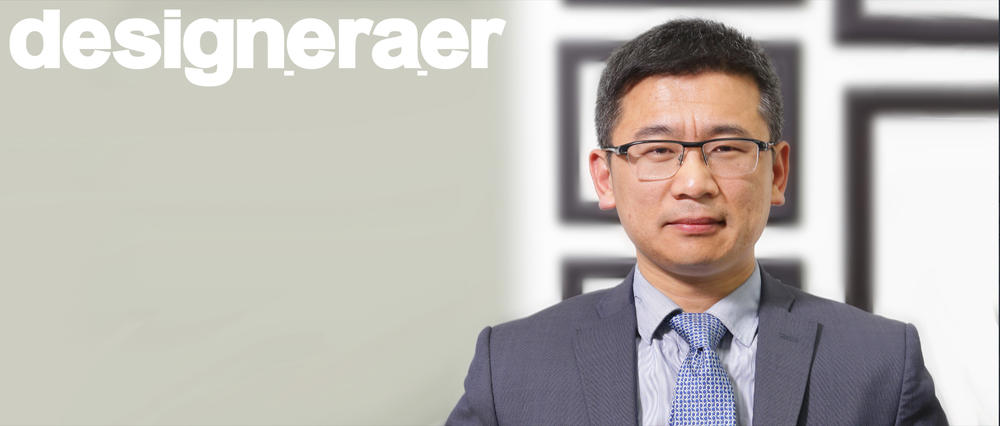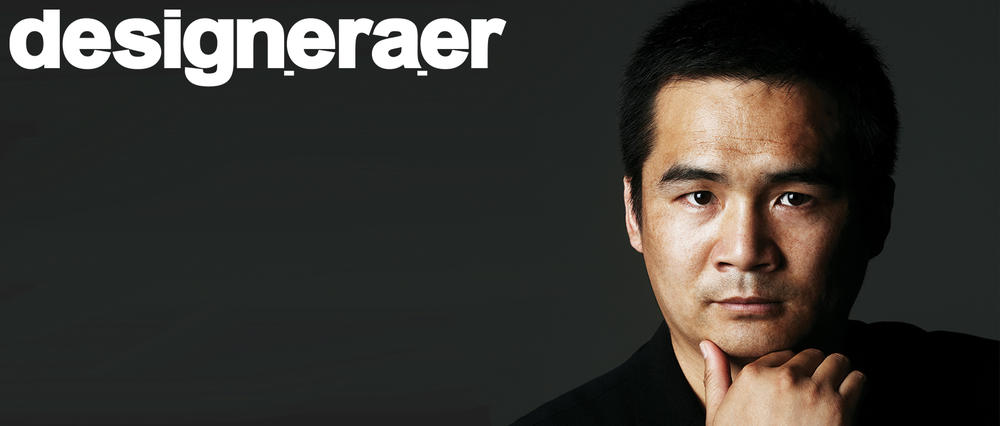The Gdora Bridge | BO Architecture Landscape Architects with Ofri Gerber
由专筑网王雪纯,小R编译
桥梁是一种促进两地交通的工程结构,但它也可以提供情感体验,两点之间的移动有时可以带来兴奋感和宽广的良好感觉。从高处往下看会加剧这种效果,并且在很大程度上增添了一种冥想的氛围。
A bridge is an engineered structure whose purpose is to facilitate passage from one location to another, but it can also provide an emotional experience: the movement between two points can sometimes provide a sensation of excitement and expansive good feelings. Looking down from a great height intensifies the sensation, and, for the most part, adds a meditative dimension.
在最开始对于如何在车流之上设计一座桥梁的头脑风暴中,建筑师寻求一种方式来反映这些感觉,并与过去和现在的语言环境保持联系。
As part of our initial brainstorming about designing the bridge over the Gdora stream, we sought a way to reflect these sensations along with maintaining a bond to the past and present values imbued in the locale.
image Credit | Ben Shalom
Gdora桥横跨220米,供行人和自行车穿过位于Kiryat Bialik东南入口的Ha’amakim大道并前往Kiryat Ata。这座桥与Gdora河平行,沿着整条河流和城市的东部边界将未来亲水步道的两头连接起来。桥梁在本质上是通往Kiryat Bialik市的门户和通道。
The Gdora Bridge spans 220 meters, for pedestrians and cyclists to pass over Ha’amakim Street at the southeastern entrance to Kiryat Bialik heading towards Kiryat Ata. The bridge runs parallel to the Gdora stream, connecting the two parts of a future promenade that will pass alongside the entire length of the stream and the city’s eastern border. The bridge essentially serves as the gateway to the city of Kiryat Bialik as well as acting as a passageway.
作为Ha'amakim改造工程的一部分,BO建筑事务所被委托为行人和骑行者设计一座桥梁,在Matronit电车穿过中心的情况下将街道扩展为四个车道,并将河道长廊的两侧连接起来。Gdora河流入城市周围的田野并向南汇入Kishon河,它在Ha’amakim大道下方的地下通道中流淌,并在此出现在街道两旁的明渠中。各种各样的动植物、水生植物、鸟类、无脊椎动物和典型的水渠植被沿着河堤繁茂生长。
As part of the Ha’amakim renewal project, expanding the street into four lanes with the Matronit tram running through the center, BO Architecture was commissioned to design a bridge for pedestrians and cyclists, that would connect the two sides of the streams’ promenade. The Gdora (Fuara) stream, which drains the fields surrounding the city and flows southward into the Kishon, flows in an underground channel underneath Ha’amakim street, and surfaces again to an open channel on either side of the street, where a wide variety of flora and fauna, water plants, birds, invertebrates and vegetation typical of waterways lives along the banks.
设计区域的特点是沿河两岸和街道两边都有大片的桉树。
The zone designated for design, is characterized by large eucalyptus trees along the banks of the stream and on both sides of the street.
建筑师的规划挑战是针对三个主要人群进行设计,即慢速行走的行人、快速通过桥梁的骑行者,以及Ha’amakim大道上的行人和司机,他们以不同的速度从下方体验桥梁。
Gdora河和曾代表该地区的沼泽地作为当地古今的部分记忆,形成了多个层面上设计桥梁的灵感,即形式、地方感和运动体验。
Our planning challenge was to design for three major target audiences: pedestrians who may be walking slowly, cyclists passing rapidly over the bridge, and drivers and those on foot passing through Ha’amakim Street at varying speeds who experience the bridge from below.
The Gdora stream and the swampland that characterized the area in the past are part of its history and present memory of place, forming our inspiration for designing the bridge on several levels: form, feeling of place, and experience of movement.
形式
Gdora地区的历史水流轴线受到土壤类型和水量的影响。在水被引到水道之前,它的弯曲路线成为桥梁设计的基础。以类似的方式,建筑师希望保留古老的桉树并根据其现场位置来扭曲桥梁形态。
Form
The historical axes of flow of the Gdora area were impacted by the type of soil and amount of water. The winding route of the water before it was diverted into the channel became the foundation for the design of the bridge. In a similar manner, we wanted to preserve the old eucalyptus trees, which lead to the need to twist the bridge in accordance with their location on site.

地方感
描绘出溪流特征的芦苇和水生绿植,随风飘摇的植物,都为桥梁提供了灵感来源,垂直元素,包括两排不同角度、不同高度的斜杆,每根斜杆都内置了弯曲的电路。栏杆由两个表面组成,外表面由锡制成,其圆形孔具有典型的河床植被图案,而内表面则由垂直元素制成的扶手组成。
当桥梁被照亮时,这两个平面就形成了一种类似于芦苇丛的雾状效果。
Feeling of place
The thicket of reeds and water plants that characterize the stream, along with the movement of the plants in the wind served as the source of inspiration for all of the bridge’s elements: the vertical elements; comprising of two rows of diagonal poles, each in a different angle and different height, within which the curving contour is placed. The railing is made of two surfaces: the external plates are made of tin, with circular holes exhibiting patterns of vegetation typical of streambeds, while the internal surfaces comprise of handrailing made of vertical elements.
When the bridge is illuminated, the two planes provide a haze effect, similar to that of a thicket of reeds.
光源被放置在安全屏障中,将周围点亮,为桥上的行人和骑行者创造了一条光之隧道,而对从桥下穿行而过的司机来说,它们看上去就像是一片芦苇丛。每根“芦苇”的边缘都有一道模仿夜空中萤火虫的光。
运动体验
从桥上和桥下经过是两种不同的体验,但移步换景之间,均能有所发现。人们在桥上所获得的视觉体验将随着白天过渡到夜晚而发生改变。
The light source is placed in the safety barrier, illuminating its sides, creating a tunnel of light for pedestrians and cyclists on the bridge and looking like a reed thicket to the drivers passing underneath the bridge. At the edge of each vertical element is a light that imitates that of fireflies in the night sky.
Experience of movement
Passing over the bridge provides a different experience to that of passing under the bridge, but what they share is the discovery of transition from seeing the bridge from a distance and seeing it up close. The visual experience one gains from the bridge changes as day transitions into night.
这座桥的曲线创造了一种有趣的步行体验。在白天,人们可以清楚地看到桉树和水;而在夜里,桥梁则是一条光之管道,其墙壁通过扶手和高低不一的柱子顶部的灯光而得以强调。
The twisting curves of the bridge create an interesting walking experience. During the day, the eucalyptus trees and the water are seen clearly; whilst the nighttime bridge is a pipeline of light whose walls are emphasized by handrails and lighting at the top of the poles of varying heights dotting the route.
Ha’amakim大道上的司机和行人从远处看到这座桥时,会将其看作是一条悬挂在斜杆上的金属蛇,而靠近细瞧便会发现构成扶手的杆网。到了晚上,这座桥远远望去便像一排萤火虫萦绕般的柔光。当人们靠近时,他们将能感受到从外面分辨出由锡饰板和杆状结构所形成的朦胧的光线。
不同的文化将跨越桥梁成为设计理念。在这个项目中,建筑师试图将另一个维度的惊奇、观察和情绪提升引入进来。
Drivers and pedestrians on Ha’amakim Street, spotting the bridge from a distance, will see it as a metallic snake hanging on diagonal poles. A closer look reveals the network of rods making up the handrail. At night, the bridge stands out from afar like a line of light with firefly-like illumination above it. As people draw near, they will be able to distinguish the light in the haze formed by the tin plaques with the pattern of rods enveloping the bridge from the outside.
Different cultures view bridges as a parable of life which one must cross. In this project, we are attempting to add another dimension of amazement, observation, discovery and a sensation of mood elevation.
建筑设计:BO建筑景观设计有限公司
地点:以色列
类别:桥梁
设计团队:Beeri Ben Shalom, Orna Ben Ziony, Lital Haimovich Rosenberg, Liat Oren In association with Arch. Ofri Gerber
客户:Yefe Nof Transportation, Infrastructure Constructions LTD.
合作方:Arch. Ofri Gerber
工程设计:Eli Ohayon - Z. Hemli - E. Oyahon Engineering Ltd
景观设计:BO建筑景观设计有限公司
电气工程:YANAI LTD. ELECTRICAL ENGINEERING
规划管理:Feuerstein – Gazit Engineers Ltd.
项目管理:Zohar Dekel-A. Bloch Infrastructure Ltd.
建筑承包商:Anton Brothers Ltd
桥架:Yaakov Edri
图片来源:Yoav Peled(除非另有说明)
Architects: BO Architecture Landscape Architects Ltd.
Location: Kiryat Bialik, Israel
Category: Bridge
Design Team: Beeri Ben Shalom, Orna Ben Ziony, Lital Haimovich Rosenberg, Liat Oren In association with Arch. Ofri Gerber
Clients: Yefe Nof Transportation, Infrastructure Constructions LTD.
Collaborators: Arch. Ofri Gerber
Engineering: Eli Ohayon – Z. Hemli – E. Oyahon Engineering Ltd
Landscape: BO Architecture Landscape Architects Ltd.
Electrical engineers: YANAI LTD. ELECTRICAL ENGINEERING
Planning management: Feuerstein – Gazit Engineers Ltd.
Project management: Zohar Dekel-A. Bloch Infrastructure Ltd.
Construction contractor: Anton Brothers Ltd
Bridge frames: Yaakov Edri
Photo credits: Yoav Peled ( unless noted otherwise )
